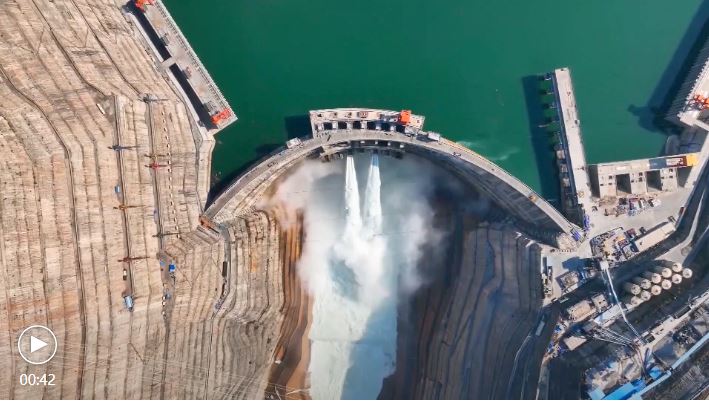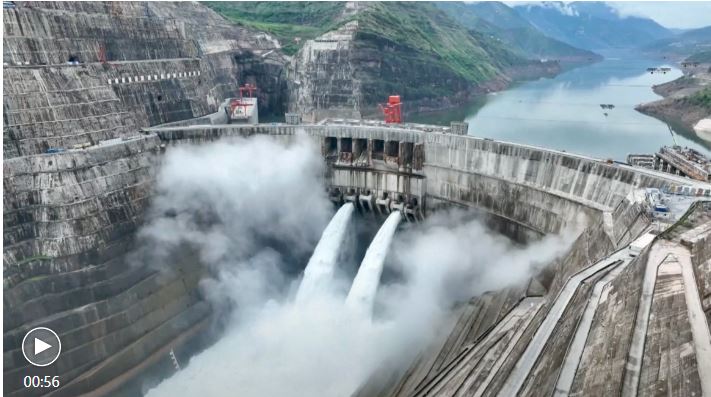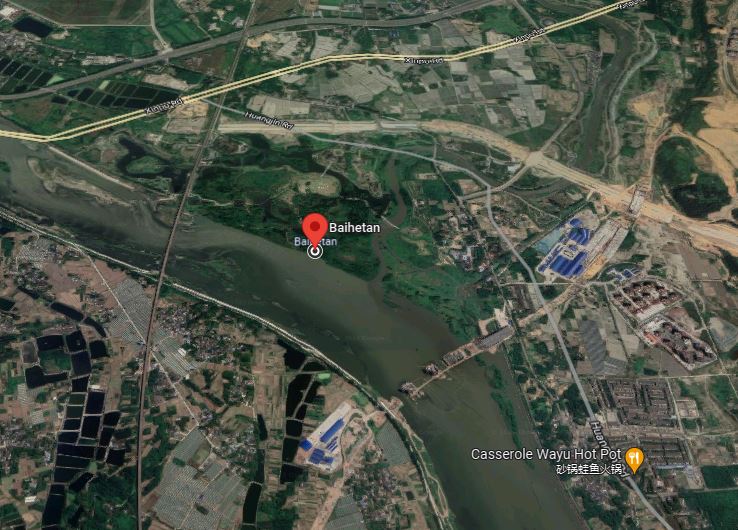#ClimateAction: Baihetan #Hydropower Plant Starts Generating 16 Gigawatt #CleanEnergy
#Baihetan Hydropower Plant can save up to 19.68 million tonnes of standard coal
- China’s 16-gigawatt (GW) Baihetan Hydropower Plant Commences Full Operation
- Baihetan Hydropower Plant can save up to 19.68 million tonnes of standard coal
- Baihetan Hydropower station can generate 62,400 gigawatt-hours of electricity a year
Beijing: #China, in persuasion of her strong commitment towards zero emission by 2060, has launched a mega clean energy plant, the 16-gigawatt (GW) Baihetan hydropower plant, which commenced full operation on December 20 on the Jinsha River, the upper reaches of the Yangtze River in the south-west of China.

According to official sources, Baihetan Hydropower Station, the second-largest hydropower plant in terms of installed capacity is composed of 16 of the world’s largest hydropower generating units, each having an installed capacity of 1 gigawatt.
Baihetan Hydropower station can generate 62,400 gigawatt-hours of electricity a year
Overall, Baihetan Hydropower station can generate 62,400 gigawatt-hours of electricity a year, enough to meet the electricity consumption needs of approximately 75 million people.

Clean Energy
As regards climate actions, the amount of clean energy generated by Baihetan can save up to 19.68 million tonnes of standard coal, cutting carbon dioxide emissions by 51.6 million tonnes.
China’s CGTN reported that Baihetan power plant is the world’s second-largest hydropower station in terms of total installed capacity, second only to the Three Gorges Dam project in the central Chinese province of Hubei.
The Baihetan dam is a spectacle of engineering on the Jinsha River, which is a part of the upper reaches of the Yangtze River and runs through Sichuan and Yunnan provinces in southwestern China.
With a height difference of 5,100 meters, the river is ideal for powering hydroelectricity, but it is also challenging for any dam to bear the amount of water pressure.
The Baihetan dam uses an ultra-high double-curvature arch configuration – it curves crosswise and lengthwise – with a maximum height of 289 meters and an arc length of 709 meters. It is located in the river valley where the hydrostatic pressure can be spread out to the rocky mountains on the sides it connects to.
Such a design also effectively saves construction material while improving safety. The dam consumed about 8 million cubic meters of low-heat cement.
Three pressure-less flood spillways were built with the dam to prevent once-in-a-lifetime flood and can discharge water at a speed of 47 meters per second.
World’s largest clean energy corridor
Three other projects along the lower stream of Jinsha river, the 13.86 GW Xiluodu Station, the 10.2 GW Wudongde Station and the 6.4 GW Xiangjiaba Station, bring the total capacity to more than twice the capacity of Three Gorges Dam.
Along with the 22.5 GW Three Gorges Dam, China has built the world’s largest new energy corridor on the Yangtze River.

The amount of clean energy generated by Baihetan can save up to 19.68 million tonnes of standard coal, cutting carbon dioxide emissions by 51.6 million tonnes.
The Baihetan project had generated over 53 billion kWh of electricity since the commissioning of the first two units in June 2021, according to China Media Group (CMG).
“East Powered by the West”
Baihetan is also part of the country’s “East Powered by the West” project – an effort to transmit electricity from the resource-rich west to energy-hungry regions in east China.
Two ultra-high-voltage direct current (UHVDC) transmission lines will send electricity to Jiangsu and Zhejiang Province, two major area of the Yangtze River Delta that is abundant in agriculture and industrial production.
The Baihetan-Jiangsu line is 2,080 kilometers in length and the Baihetan-Zhejiang line traverses for a total distance of 2,140.2 kilometers. The Baihetan-Zhejiang line is set to enter operation by 2023, capable of transmitting up to 8,000 megawatts of electricity, CMG said.
No doubt, China has become a global leader as regards renewable energy expansion worldwide, and Baihetan #Hydropower plant with capacity of 16 Gigawatt clean energy is the latest endeavor towards advancement of leadership required for making a green and sustainable world.
By: M.A, Email: vow2025@gmail.com







